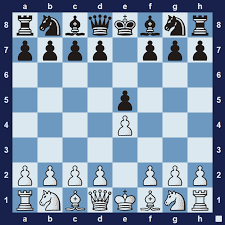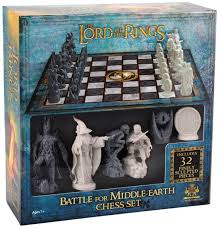The Top 5 Chess Openings for Beginners: Your Guide to a Strong Start
Chess is a game of strategy, skill, and foresight, and the opening phase is where it all begins. A strong opening sets the stage for the middlegame and endgame, dictating your control of the board and your chances of success. For beginners, mastering a few key openings helps you understand fundamental principles like piece development, center control, and king safety.
This expanded guide delves into the top five chess openings for beginners, with detailed insights into their variations, tactical opportunities, and how to practice them effectively.
Why Chess Openings Matter
Chess openings provide the structure for the rest of the game. By learning and practicing solid openings, you can:
- Control the Center: The squares e4, d4, e5, and d5 are critical for piece mobility and influence over the board.
- Develop Your Pieces: Quickly mobilize your knights, bishops, and pawns to active positions.
- Ensure King Safety: Preparing to castle early protects your king and helps you connect your rooks.
- Understand Tactics: Openings teach common tactical patterns and traps, which are invaluable for middlegame play.
1. The Italian Game (e4 e5 Nf3 Nc6 Bc4)
The Italian Game is a cornerstone of chess openings, renowned for its simplicity and effectiveness. It focuses on rapid piece development and early pressure on Black’s position.
Key Moves:
- e4 e5
- Nf3 Nc6
- Bc4
Variations:
- The Giuoco Piano (…Bc5): Black responds with …Bc5, creating a balanced and strategic position where both sides can castle early.
- The Two Knights Defense (…Nf6): Black develops a knight to f6, often leading to tactical opportunities with moves like Ng5 for White.
- The Evans Gambit (b4): White sacrifices a pawn with b4 to gain rapid development and open attacking lines.
Why It’s Great for Beginners:
- Tactical Patterns: Helps you practice early attacks like targeting the f7 pawn.
- Learning Positional Play: Introduces ideas like controlling central squares and developing pieces efficiently.
- Flexibility: Transitions easily into numerous middlegame plans.
Tips for Mastering the Italian Game:
- Avoid unnecessary pawn moves that delay development.
- Focus on controlling the center and castling early.
- Watch out for counterattacks like Black’s …d5, which can challenge your bishop on c4.
2. The Ruy-Lopez (Spanish Opening) (e4 e5 Nf3 Nc6 Bb5)
The Ruy-Lopez is a quintessential opening for learning positional chess. It introduces long-term planning and highlights the importance of piece activity and pawn structure.
Key Moves:
- e4 e5
- Nf3 Nc6
- Bb5
Variations:
- The Morphy Defense (…a6): Black challenges the bishop immediately. White can retreat to a4 or exchange on c6, depending on their strategy.
- The Closed Ruy-Lopez (…d6): A slower, more strategic line where both sides maneuver for long-term advantages.
- The Open Ruy-Lopez (…Nxe4): Black sacrifices a pawn to gain active piece play and counterattack opportunities.
Why It’s Great for Beginners:
- Focus on Weaknesses: Teaches how to create and exploit weak squares in your opponent’s position.
- Long-Term Planning: Encourages strategic thinking beyond immediate threats.
- Positional Understanding: Introduces concepts like the importance of controlling open files and diagonals.
How to Play It Well:
- Develop your pieces efficiently, and don’t rush to exchange your bishop unless it benefits your position.
- Use the extra time gained from Black’s pawn moves to solidify your center.
- Castle early to connect your rooks and prepare for an active middlegame.
3. The Queen’s Gambit (d4 d5 c4)
The Queen’s Gambit is an iconic opening that sacrifices a pawn for control of the center. It’s widely respected for its balance of tactical and positional elements.
Key Moves:
- d4 d5
- c4
Variations:
- Queen’s Gambit Accepted (…dxc4): Black accepts the gambit, allowing White to gain rapid development.
- Queen’s Gambit Declined (…e6): Black fortifies the center, creating a slower, strategic battle.
- Slav Defense (…c6): Black uses the c6 pawn to support the center, avoiding early weaknesses.
Why It’s Great for Beginners:
- Control the Center: Dominates the critical central squares early in the game.
- Learn Positional Play: Encourages understanding of pawn structures and piece coordination.
- Safe Opening: Even if Black declines the gambit, White retains strong chances for an advantage.
Beginner Tips:
- If Black accepts the gambit, develop your pieces rapidly to regain the pawn under favorable conditions.
- Avoid rushing to recapture the c4 pawn, which can waste valuable time.
- Focus on maintaining your pawn structure and activating your pieces.
4. The London System (d4 Nf6 Nf3 Bf4)
The London System is a solid, low-maintenance opening that allows White to develop quickly and safely. It’s a favorite among players who value consistency.
Key Moves:
- d4 Nf6
- Nf3 Bf4
Variations:
- Traditional London (…e6): Black responds with …e6, leading to a standard pawn structure.
- Modern London (…g6): Black fianchettos their bishop, leading to dynamic possibilities for both sides.
Why It’s Great for Beginners:
- Consistency: The setup is nearly identical against most Black responses.
- King Safety: Facilitates early castling and solid piece placement.
- Simple Plans: Avoids the need for memorizing lengthy variations.
Playing Tips:
- Bring your bishop to f4 early, but be prepared to retreat if Black attacks it with …h6 or …g5.
- Use the pawn on c3 to reinforce your d4 pawn and prepare for b4 or e4 expansion.
- Avoid passive play; look for opportunities to create threats.
5. The Sicilian Defense (e4 c5)
The Sicilian Defense is a dynamic and ambitious response to e4, allowing Black to counterattack and create imbalances.
Key Moves:
- e4 c5
Variations:
- Open Sicilian (2. Nf3 followed by d4): A sharp, tactical line where White sacrifices a pawn for central control.
- Closed Sicilian (2. Nc3): A slower, strategic option focusing on piece development.
- Sicilian Dragon (…g6): Black fianchettos the dark-squared bishop, creating counterplay along the g-file.
Why It’s Great for Beginners:
- Active Play: Black immediately fights for the initiative.
- Preparation for Advanced Play: Introduces tactical complexity and strategic depth.
- Versatility: Offers numerous variations to suit different playing styles.
Tips for Success:
- Learn one variation thoroughly before branching out.
- Use the c-pawn to control key squares and open lines for your pieces.
- Avoid falling into traps by prioritizing development over early attacks.
Chess Tactics for Beginners
Understanding tactics is essential for executing your plans in the middlegame. Here are some common tactics every beginner should know:
- Forks: Attacking two pieces at once with a single move (commonly with knights).
- Pins: Using a piece to immobilize an opponent’s piece, making it dangerous to move.
- Skewers: Forcing an opponent’s more valuable piece to move, exposing a weaker piece behind it.
- Discovered Attacks: Moving one piece to unleash an attack from another piece.
Practice these tactics to improve your ability to recognize and exploit opportunities.
Where to Learn and Practice Chess
To improve your chess skills, you need to combine theory with practice. Here are some resources for beginners:
- Chess.com: Offers interactive lessons, puzzles, and online games.
- Lichess.org: A free platform with tactics training, analysis tools, and tournaments.
- Books: Start with classics like “Chess Fundamentals” by Capablanca.
- Apps: Use apps like Magnus Trainer to improve your skills on the go.
- Coaches: Consider hiring a chess coach for personalized instruction.
Conclusion: Building Your Opening Repertoire
Mastering these five openings will provide a strong foundation for your chess journey. Focus on understanding their principles, practice regularly, and study games played by masters to deepen your knowledge. With dedication and practice, you’ll see significant improvements in your game.



